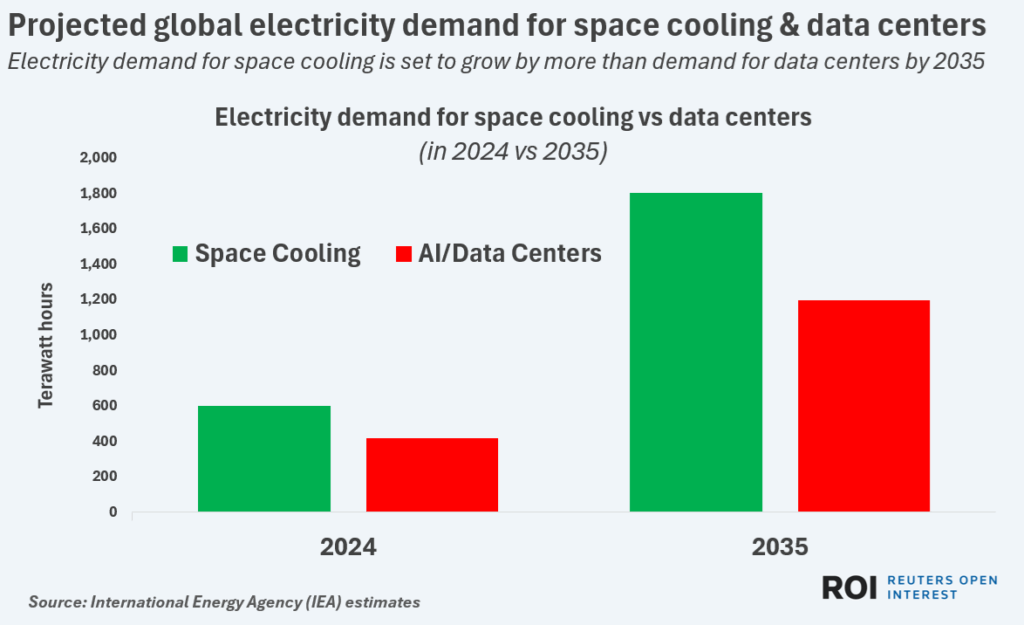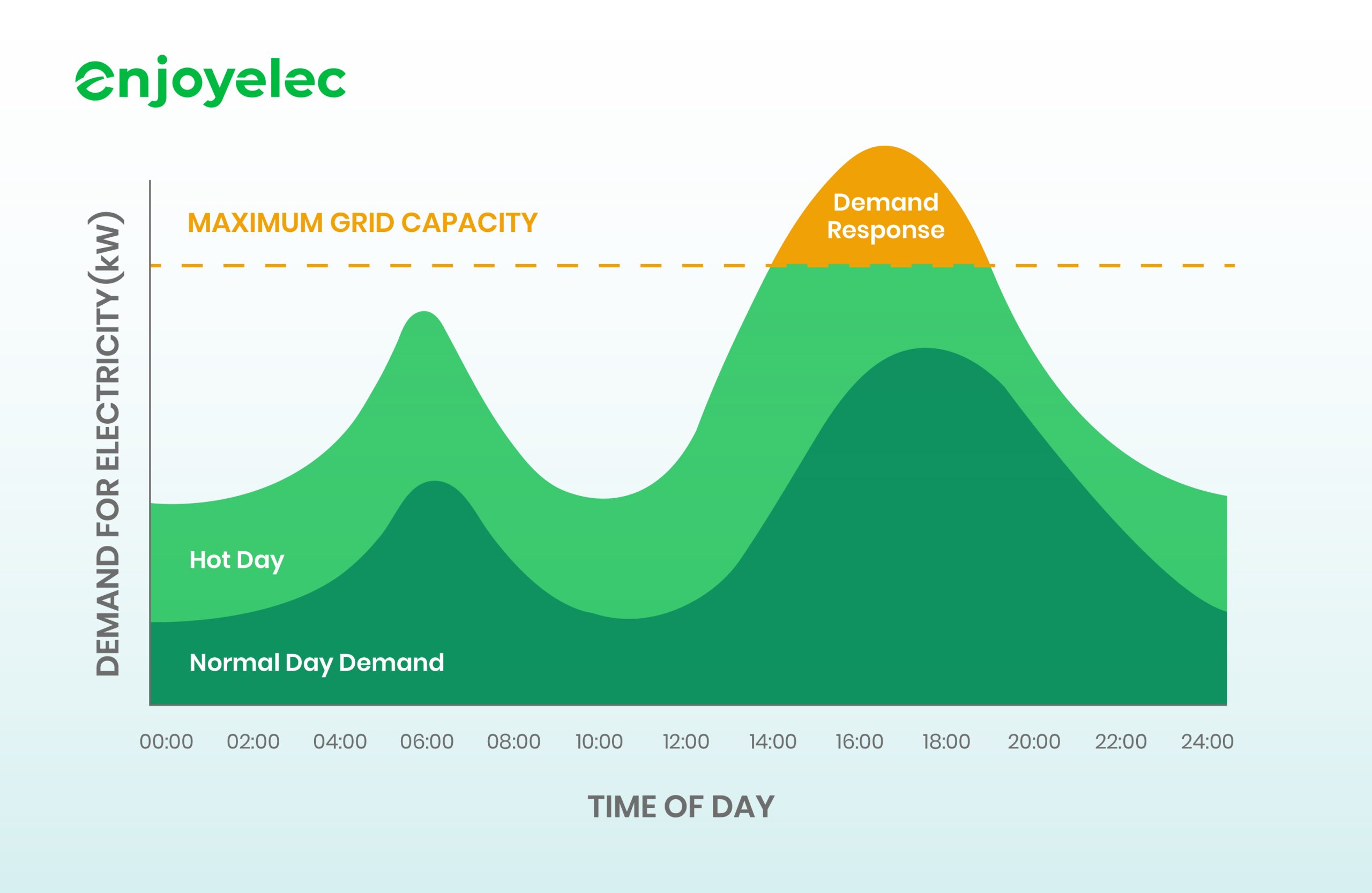
This summer, the biggest challenge facing the U.S. power grid isn’t artificial intelligence. It’s air conditioning.
In late June, a record-setting heatwave hit the Northeast and Mid-Atlantic. Temperatures in Manhattan reached 99°F. Grid operators scrambled to maintain stability, and electricity prices in places like New York City surged above $2,400 per megawatt-hour.
These kinds of weather events are no longer rare. According to a recent Reuters article, electricity demand for space cooling is growing even faster than demand from data centers.
As cities heat up, the grid is struggling to keep pace.

Source: Reuters, June 2025
For building managers, that’s both a risk and an opportunity.
On one hand, extreme heat drives higher costs and puts more strain on HVAC equipment. On the other hand, it opens the door to new ways of managing energy and generating value by reducing demand at critical moments – a practice called “demand response”.
Cooling demand is not only one of the fastest-growing loads on the grid, but it’s also one of the most difficult to manage for two reasons: it’s volatile and not very flexible.
Volatile: it reacts sharply to weather. On a mild day, cooling demand might be low, but as soon as temperatures rise past a certain point (often in the early afternoon), it can spike across an entire region within hours.
This kind of synchronized surge is difficult for utilities to predict with precision, and even harder to cover in real-time. Grid operators must keep expensive, carbon-intensive backup energy sources, called peaker plants, on standby to cover a few critical hours. These peaks are happening more frequently and in more places as climate patterns shift.
Inflexible: air conditioning is not exactly optional during heatwaves – it’s a load that building managers can’t adjust without consequences. During extreme heat, cooling is tied directly to occupant safety, and legal requirements mean cutting back isn’t an option.
In some multifamily buildings, cooling is also managed at the unit level, not centrally, making coordinated reductions a challenge.
This combination helps explain why cooling has become such a high priority for grid operators. It’s a key source of load that can have a large system-wide impact if made slightly more responsive.
That’s where demand response comes into play. Demand response is a tool that utilities implement to keep the grid stable during peak demand periods. When electricity use is expected to spike, usually during extreme heat, buildings enrolled in a demand response program are asked to reduce energy consumption. In return, they receive compensation based on how much energy they reduce during the demand response event.

Image credit enjoylec
A single apartment building reducing its consumption at peak demand might not move the needle on its own. But when thousands of buildings shave a small amount of energy at the right moment, it reduces the need for emergency generation, lowers costs, and gives grid operators more flexibility to keep power flowing where it’s needed.
The advantages multifamily buildings have with demand response:
Multifamily buildings were once considered too complex for demand response. Decentralized HVAC systems, concerns about tenant comfort, and limited on-site staff made participation difficult.
That perception is starting to shift, with automation playing a key role.
Automation maximizes a building’s financial return while reducing the burden on site staff. Instead of manually adjusting equipment or watching the clock, the building responds in real time through pre-programmed logic tuned to its specific layout and performance patterns.
Parity helps multifamily buildings automatically participate in demand response events, without sacrificing comfort or relying on manual efforts from the building staff. Our technology integrates directly with HVAC systems to precisely curtail load, recover smoothly, and unlock a new source of recurring revenue.
For a clear example of how small, well-timed contributions from individual buildings can play a meaningful role when the system is operating near its limits, look no further than the heatwave that swept across the Northeastern US this past June (the planet’s third-warmest June on record).
On one of the hottest days of the year, electricity demand in New York City surged to 12,600 megawatts—just 10 megawatts below the forecasted peak of 12,610 MW. Within that window, Parity-automated multifamily buildings provided approximately 300 kilowatts of curtailment.
That single contribution equates to the real-time power needs of around 250 homes. It may be a small fraction of the total load, but it was delivered precisely when the grid needed it most, without tenant complaints or staff intervention.
Moments like this underscore how distributed, responsive demand from residential buildings is becoming an increasingly valuable part of grid stability. One building can’t prevent an emergency on its own, but many buildings acting together can certainly tip the balance.
Demand response is evolving from a niche option to a core grid strategy. As programs and platforms continue to mature, multifamily buildings are becoming an active, vital part of the equation.
To learn more about maximizing demand response revenue through automation, email contact@paritygo.com or call 1-833-372-7489.